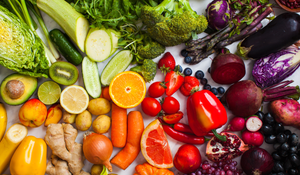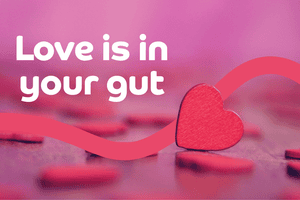Love Sport? Here’s Why You Need to Consider Your Gut to Achieve Your Best Performance
Exercise and sports nutrition present unique challenges so far as the gut is involved. We asked Dietitian Laura Tilt to explain why, and how to help the gut adapt.“When it comes to achieving your best at sport, I’m guessing you’re more likely to think about how well your trainers are performing over how your gut is functioning. But gut function can have a major impact on sports performance, so it's worth paying attention to.”
Let’s Talk Exercise and the Gut
For the most part, exercise has a positive impact on gut health, with evidence showing that regular, moderate intensity exercise (the sort during which you can talk, but not sing) can promote gut motility (movement), support gas clearance and enhance the diversity of the gut microbiome (diversity being a marker of a capable and resilient microbial community).
But, the story doesn’t end there. As exercise intensity and duration increases from moderate to intense, (think anything from a long distance run to a triathlon) so does the incidence of gut symptoms like bloating, cramps and diarrhoea. In fact, studies suggest that 30-50% of athletes experience one or more exercise induced gut symptoms. Not only are symptoms uncomfortable, they can disrupt training sessions and even lead to abandoning a race.
Runners are particularly vulnerable to gut distress, with several studies finding that more than 80% of runners are affected by symptoms, giving rise to the phrase ‘runner’s gut’. Training for longer races or in warm conditions can exacerbate symptoms too. So why is this?
Under PressureTo understand why, we need to look at what happens in the gut during exercise. As exercise begins, blood flow is directed away from the gut to the working muscles and skin, and this increases with increasing exercise intensity. With all out effort, it’s thought that gut blood flow can be reduced by as much as 80%, which may lead to abdominal cramps, sickness and diarrhoea. Symptoms can be further exacerbated by hot weather and dehydration, which are common in race conditions.
The type of exercise can also be a factor. Running is one of the toughest forms of exercise on the gut, with the combination of hormones, changes in blood flow and repetitive jostling triggering a range of symptoms - most notably an urgency to poop. Cyclists on the other hand may experience more symptoms in the upper gut because of increased pressure to the tummy when riding in aero position (bent forward at the waist, with forearms on the bars).
Fuel FactorsNutrition plays a role too. Exercise lasting over an hour requires a steady intake of carbohydrate and fluid to maintain performance, but delivery of these to the working muscles is dependent on the gut.
When exercise intensity is high, digestion and absorption is inhibited, and consuming too much at the wrong time can lead to bloating, nausea, cramping and diarrhoea. If you’ve ever attempted to exercise too soon after a meal, you’ll know how uncomfortable it can be.
For many athletes, consuming the large quantities of carbohydrate and fluid required to perform at high intensities is a real challenge. So, with all this in mind, what can be done to reduce the chance of gut symptoms and prevent interruptions to training?
Training the gutThanks to sports scientists, we now know that the answer is in ‘training the gut’. That is to say that the gut can be ‘trained’ to get used to digesting and absorbing high intakes of carbohydrate and fluid during exercise, which in turn reduces symptoms of gut distress.
Two key strategies are involved in training the gut. The first involves increasing carbohydrate intake in the everyday diet, and the second, practising a fuelling strategy during exercise that mimics what’s needed under race conditions. Repeated over a period of several weeks, studies show these strategies can increase the gut’s capacity to absorb carbohydrate and the athlete’s ability to tolerate larger volumes, the net effect of which is reduced gut symptoms - leading to better (and more comfortable) performance.
Part of any fuelling strategy will involve working out how much carbohydrate and fluid is needed during a typical training session. Current guidelines suggest about 60 grams of carbohydrate per hour for exercise lasting up to 2 hours. For those unsure where to start, advice from an experienced sports dietitian can be really helpful, particularly individuals with a sensitive gut, as some types of sports drinks and supplements can aggravate symptoms. Most runners will find consuming carbohydrates in the form of drinks or gels more comfortable than solid food, but some types of drinks and gels are more easily absorbed than others.
Gut health when trainingFollowing a smart nutrition strategy should go a long way to helping minimise gut symptoms during training sessions but taking other steps to protect the gut when exercising regularly and intensely can help too. Here’s how.
Begin each training session well hydrated. Dehydration increases the chance of gut symptoms like nausea and vomiting. As a guide, urine that is pale-yellow / straw coloured is a good sign of adequate hydration.
Avoid large meals in the hours before training Remember that digestion slows once exercise starts, so giving your stomach the time to empty (2-4 hours for a main meal) before you exercise is sensible. Equally a meal very high in fat or fibre will empty from the stomach more slowly, so bear this in mind too.
Treat rest seriously. Rest helps both the body and gut to recover from an intense training session. Build in rest periods each week and prioritise sleep during intense training periods.
Be smart with NSAIDS Routine use of non-steroidal anti-inflammatory drugs (NSAIDs) has been associated with an increased risk of gut symptoms, so avoid using them to push through an injury or manage post-training soreness.
Practice strategies to ease stress and anxiety The gut and brain are connected, and anxiety can exacerbate gut symptoms, particularly on race days. Slow and controlled breathing exercises (for example box breathing) and meditation are strategies that can help to switch the body from ‘fight or flight’ to a calmer state.
Prioritise carbohydrates, keep them diverse A high carbohydrate diet helps fuel endurance exercise (and is also fuel for gut microbes), but the key is diversity. Rather than eating the same types of carbohydrates with each meal (e.g. bread or pasta) mix things up by adding different grains, e.g. quinoa oats, rye, and choosing a variety of fruits and vegetables - studies suggest this can help to promote diversity of the gut microbiome.
If you experience a change in your stools or gut symptoms that last longer than a couple of weeks, always check in with your G.P. or healthcare provider to ensure that they aren’t a result of an underlying condition.References
Brouns F, Beckers E. Is the Gut an Athletic Organ? Digestion, Absorption and Exercise. Sport Med. 1993;15(4):242-257. doi:10.2165/00007256-199315040-00003
De Oliveira EP, Jeukendrup A. Nutritional Recommendations To Avoid Gastrointestinal Complaints During Exercise. Sport Sci. 2013;26(114):1-4.
Ortiz-Alvarez L, Xu H, Martinez-Tellez B. Influence of Exercise on the Human Gut Microbiota of Healthy Adults: A Systematic Review. Clin Transl Gastroenterol. 2020;11(2):e00126. doi:10.14309/ctg.0000000000000126









